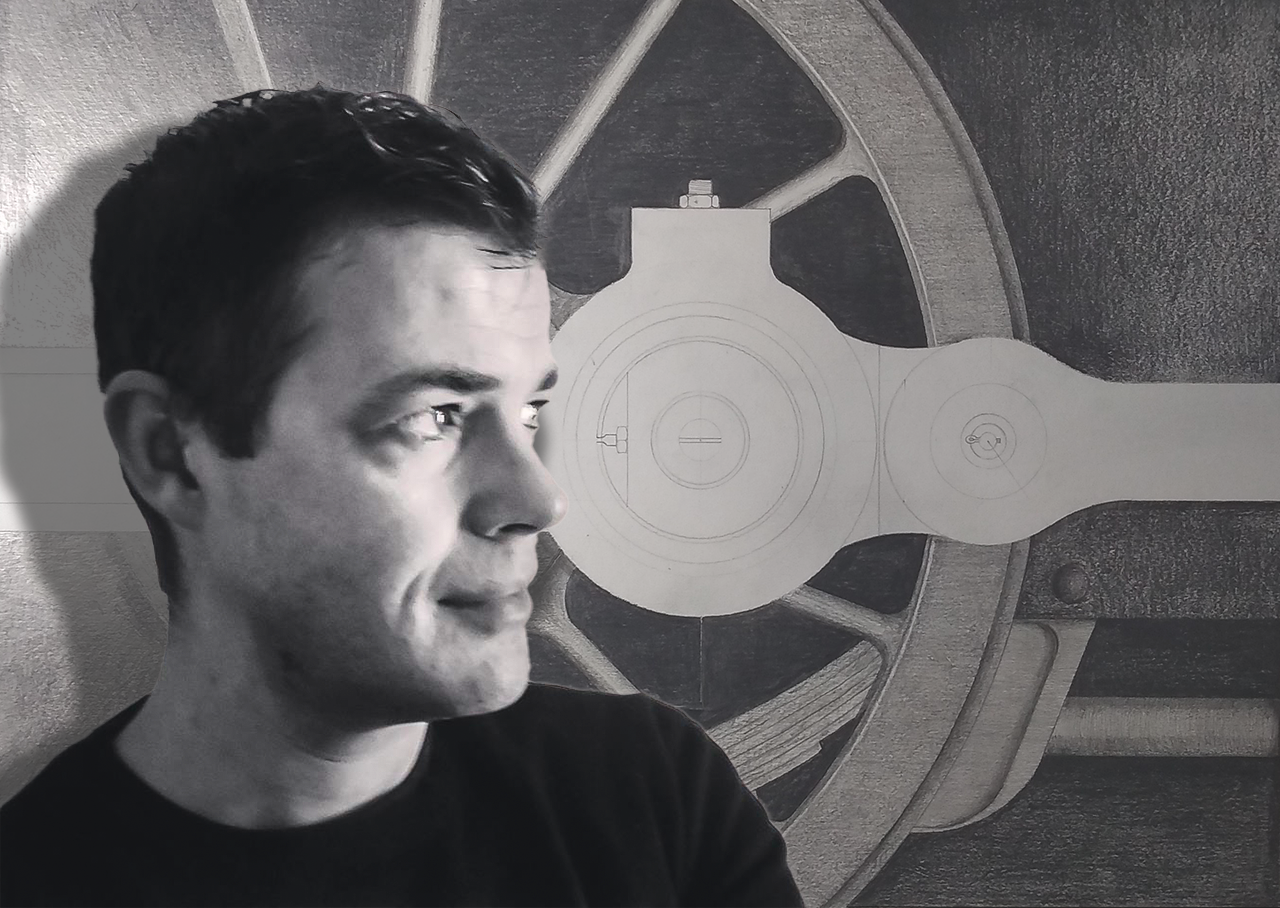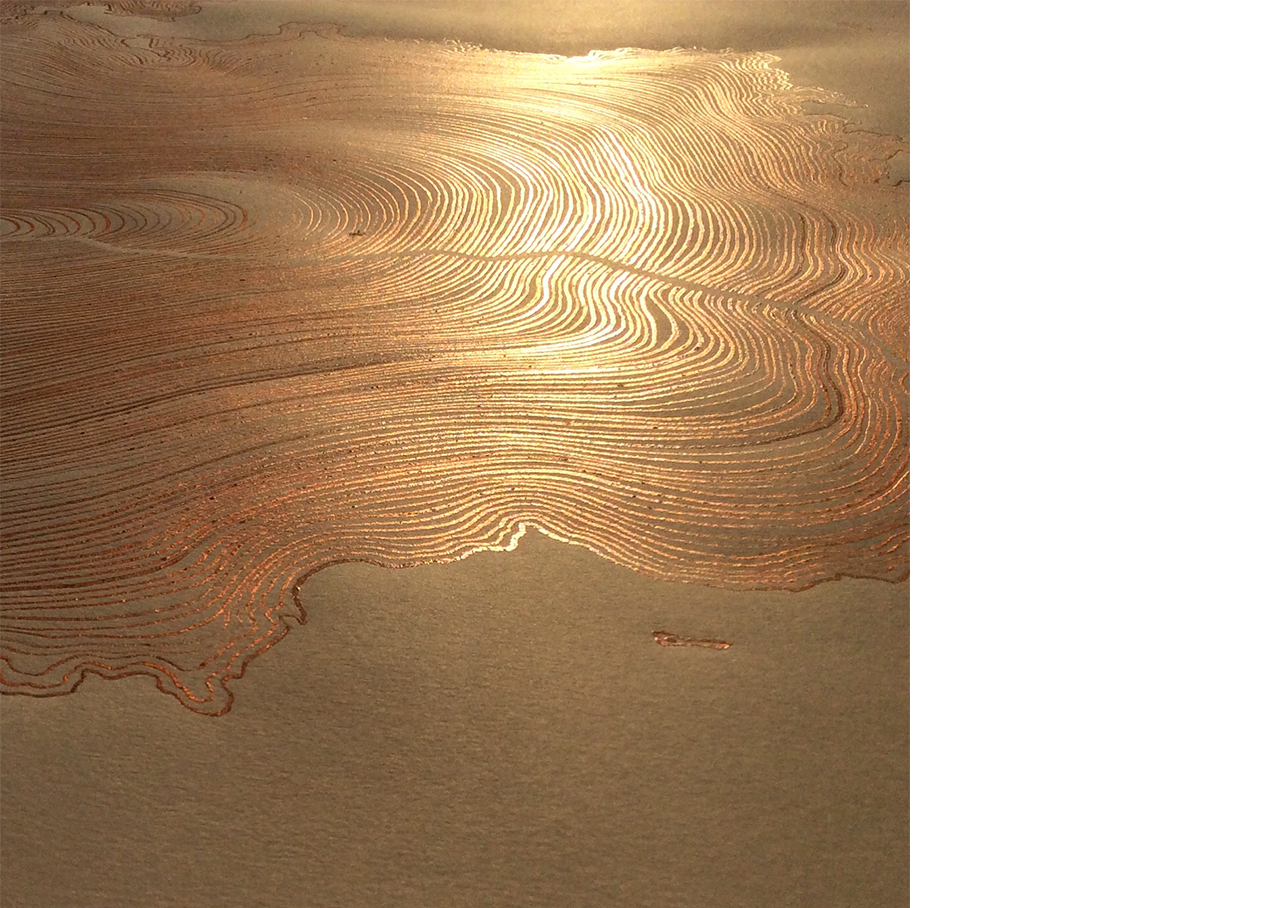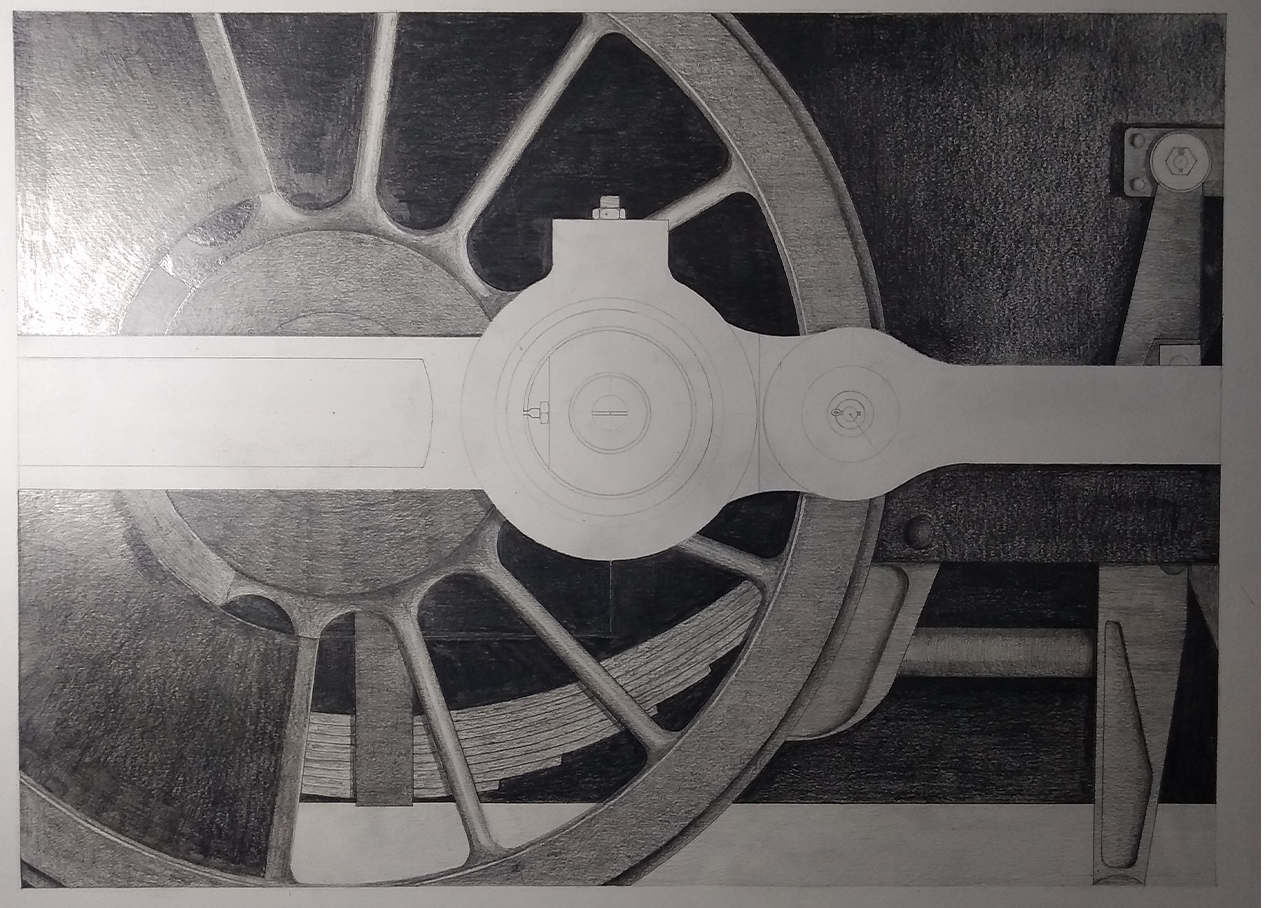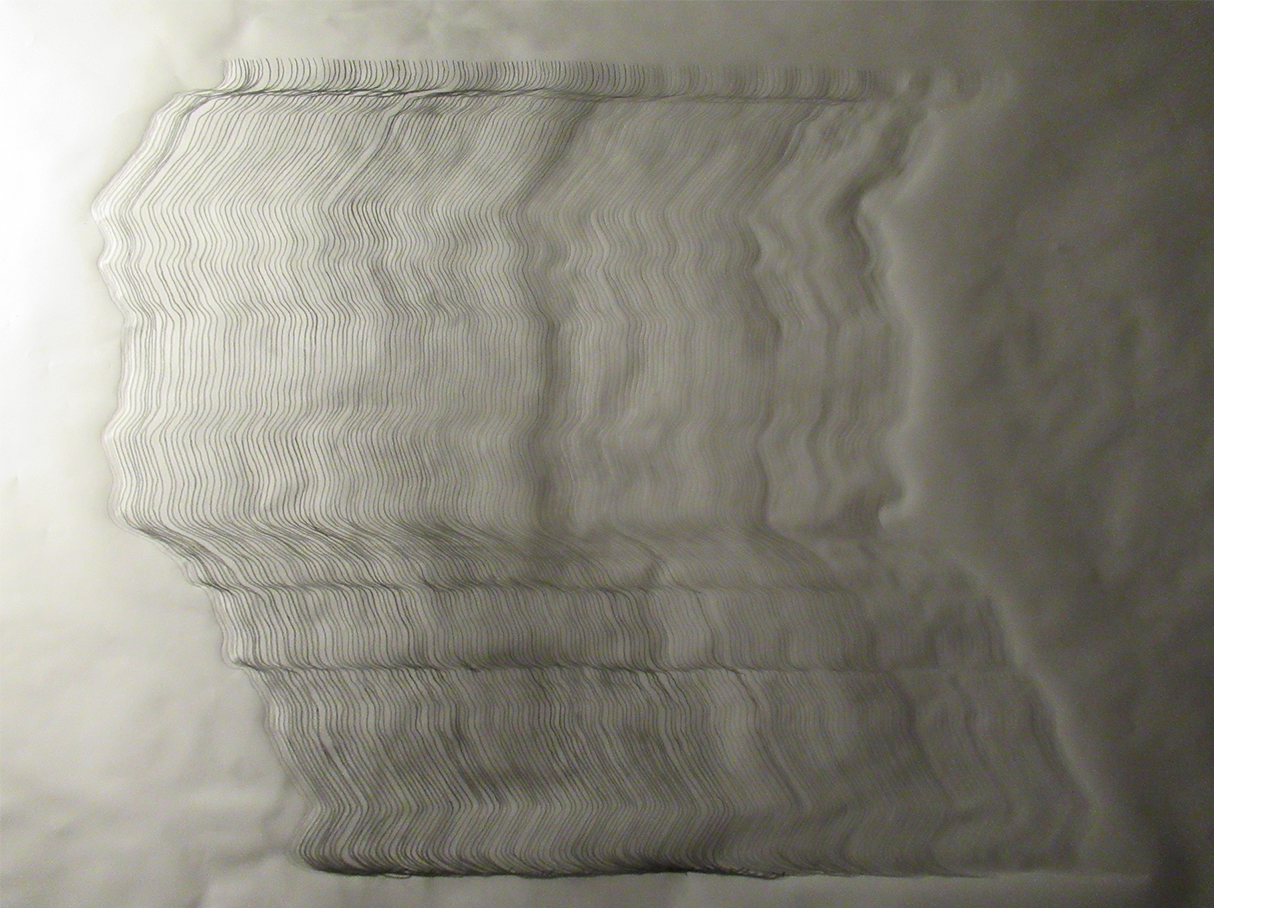Broad Canvas: Tell us a little about your practice and the mediums you use.
Mark Clay: My practise was very heavily drawing-based, and still is, though I am now branching out beyond that. I find great inspiration in the interactions between the natural and built environments, particularly industrial heritage and the constant sense of change and transformation that happens in the world around us. I spend as much time as I can exploring landscapes and discovering what happens there now - and in the past - so my work has taken me to Anglesey and the Lake District, with plans to explore Portland and Orkney (when the lockdown is over!) At the moment I am strongly drawn back to graphite pencil drawing as an antidote to these strange and uncertain times we live in.
BC: How are you 'branching out' beyond a drawing-based practise? Is that through new mediums or techniques?
MC: For a start, I’m pushing out into new techniques such as textiles and use of light. At college I designed a model stage set and lighting for an opera and I love the idea of applying my art in a specific setting like that.
I’m also increasingly interested in the idea of installations and art being out in the landscape, having recently looked at artists like Robert Smithson, Andy Goldsworthy and others. I’m also a member of “Portable” a new collective of artists in Oxford and we’re very excited about doing some shows and work in 2021 that takes us into new spaces and ways of working.
All of that will have to wait until the lockdown is finally over, of course.
BC: Can you describe your practice/artwork using five words?
MC: Exploration, discovery, transformation, storytelling, time!
BC: You’ve put an emphasis on ‘time’ there. How does time play a factor?
MC: It sort of forces its way in on its own when I am working! I find it really interesting to think about how art can reflect on things that are changing around us all the time (quickly or slowly). Perhaps it’s also because I am so interested in history and storytelling, and that sense of “once upon a time…” that we are all instinctively drawn to. Or perhaps I’m just getting older.
BC: What is your most important artist tool? Is there something you can't live without?
MC: It would have to be my sketchbook. It's the thing I most rely on to capture thoughts, ideas and reflections, to lay the groundwork for creating an artwork, and to help me remember things for future reflection and consideration. Including how far I have come. During my Masters, my sketchbooks transformed into big lever arch files full of documentation and reflection but what they gained in richness they lost in portability. So I’m looking forward to being able to travel with my smaller format sketchbook and just a few pens and pencils again (when I’m allowed!)
BC: I think that’s a really interesting point that a sketchbook is a great tool for reflection. Are you very particular about your sketchbooks? Have you found the perfect one yet?
MC: Well, I generally use the Seawhite sketchbooks (from Broad Canvas, of course!) though I do get bought others by kind people. I’m not especially particular about them, although there are things in some of them that I am really fond of or excited about. I hate the idea of taking pages out of them, though, because what I most value, I think, is having them as a resource or library to refer back to. It’s amazing how often, when I look back through an old sketchbook, that I see the germ of an idea or piece that I have been working on more recently; or I discover something that I feel more able to do something with after a period of time. It’s encouraging and validating when that happens. And I find that a more reliable way of generating ideas and motivation than simply hoping or waiting for inspiration to strike.






